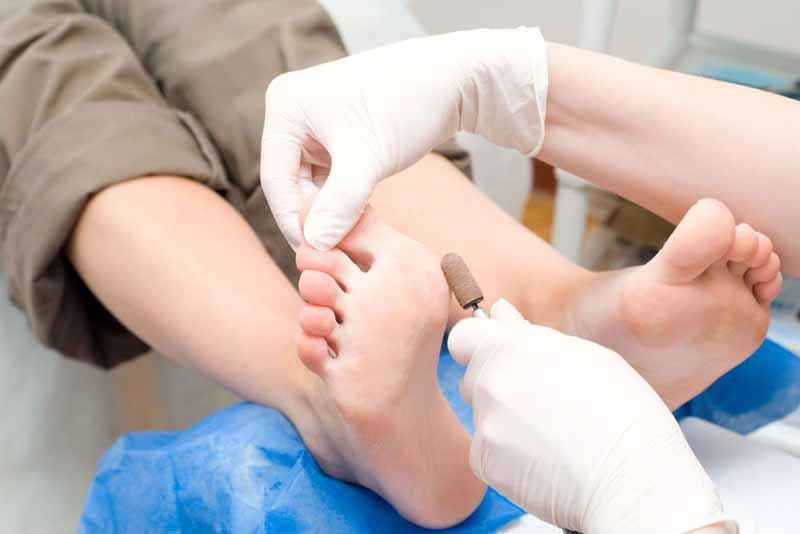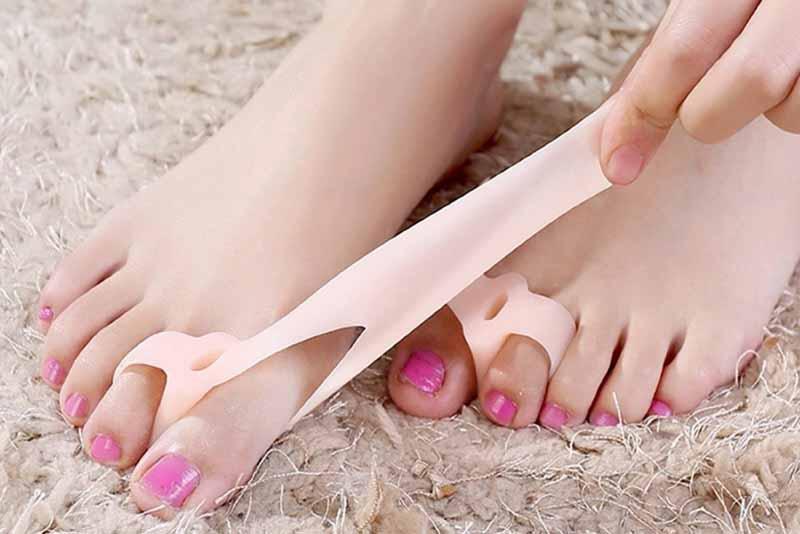Bunions are bony bumps on the joint where your primary foot bones meet your big toe. This bump is a misalignment of your toe joint or extra bone formation that causes your big toe to bend inward, often leading to pain and inflammation.
It’s not known exactly what causes bunions, although women are far more likely to develop them. It’s believed that there are many factors that contribute to the development of bunions, including wearing shoes that are too tight, flat feet, years of ballet dancing, bone deformities, and genetics. It seems that there are genetic factors at work in many causes that lead to improper bone formation that predisposes many women to develop bunions.

If you suffer from bunions, there are a few treatment options that may provide relief.
Nonsurgical Bunion Treatments
If the pain from the bunion isn’t too severe, nonsurgical options are a good place to start. It’s important to wear comfortable walking shoes over high heels, which put additional pressure on the sides of your feet. Anti-inflammatories like aspirin, ibuprofen, and naproxen can also reduce the inflammation and pain.
Some stretches can reduce the pain of a bunion as well. Your doctor may also recommend custom insoles to slow the progression of the bone deformity and make it easier to walk without pain. Sometimes cortisone injections into the inflammed joint can provide relief.
Bunion Surgery
If these solutions don’t offer relief or your bunions cause constant pain or trouble walking, surgery may be the best option. Surgical bunion removal can correct the problem while avoiding potential complications like bursitis and hammertoe.

There are many forms of bunion removal, but all procedures help to restore your bones, nerves, and tendons to the right position and remove the bump to treat the pain. In most cases, the surgery involves removing the bony growth and realigning your toe joint by cutting the ligaments at your toe joint. In severe cases, the bone may be cut during an osteotomy to shave off the extra growth.
While there are potential complications of bunion surgery, such as overcorrection or limited range of motion of the big toe, the surgery has a high success rate and it can help you once more walk and wear shoes without pain. You can dramatically increase the odds of surgical success by wearing proper orthotics and footwear afterward and following your doctor’s care instructions. Depending on the extend of the surgery, it can take months to recover, but you will only need to wear a surgical boot for a couple of weeks before switching to a brace. Most people recover completely from bunion surgery with no lasting effects.
If you’ve already tried home remedies and non-invasive treatment options for a painful bunion, it may be time to discuss surgery with your physician. Remember that bunions are progressive deformities that will get worse over time. Don’t delay in getting a diagnosis and treatment or you may develop a more serious condition like bursitis, an inflammation of the fluid-filled pads of the joints that can take months to recover from.
Bài viết liên quan
Suffering from Hormonal Imbalance? How HRT Can Help
Hormones are chemical messengers that affect everything from how our cells work to brain function and muscle growth. Sometimes...
Important Steps to Take in the Aftermath of a Devastating Auto Accident
Looking back, you can’t believe how quickly everything happened. Like any other weekday, you were driving to work using...
Worthy Hints to Have Best Spa Treatment Packages
Spa treatments are gaining popularity due to varied reasons. In this kind of treatment, you will not only enhance...
What You Should Know About Testosterone Therapy and Prostate Cancer
If you’ve ever considered testosterone therapy, you’ve probably been warned about the risk of prostate cancer. For over thirty...
Great Way to Assist You Get Rid of Fat
When it comes to excess weight reduction, it truly is past one’s wildest imaginations to what degree people might...
Ways of Treating Your Child’s Sinus Infection Symptoms
Sinusitis is an over diagnosed condition in children. Many doctors and parents usually think that a yellow or green...